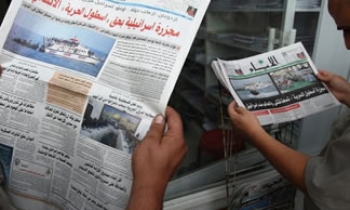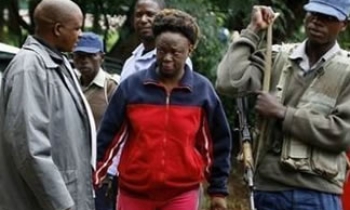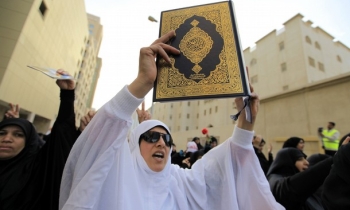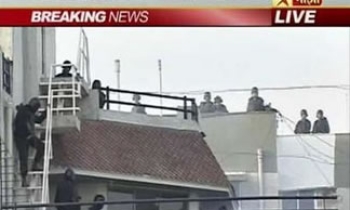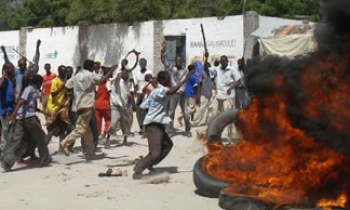Eleven Pakistani media personnel were killed and seventeen others injured in the October 8 quake. Two hundred and forty-two persons working for the media suffered personal or property losses �69 family members of media personnel were killed and 15 others injured. These findings have been revealed in a just-published preliminary report based on the first phase of an assessment mission of the Pakistan Press Foundation (PPF) to the earthquake-affected areas from October 15-23, 2005.

The report said 117 houses of media personnel were destroyed and another 54 suffered damages to their homes. Out of 20 press clubs and union of journalists in the area, premises of 12 were either destroyed or damaged. In most cases, furniture and equipment in damaged premises of media organisations were destroyed.
The earthquake measuring 7.6 on the Richter scale with epicentre near Muzaffarabad area, 95 km northeast of Islamabad, caused widespread destruction in large parts of six districts of North West Frontier Province (NWFP) and five districts of Pakistan-occupied Kashmir (PoK). By early November, the death toll has reached over 80,000 and the number of injured is estimated to be over 120,000. The number of homeless is estimated to be 3.5 million. Shelter and logistics remain urgent priorities. Landslides continue to be a threat to road travellers and aftershocks continue.
Majority of losses to media personnel and organisations occurred in Muzaffarabad. Ten media personnel were killed in the city and eleven were injured. Fifty family members of media workers were killed and another ten were injured. One hundred and nine houses of media personnel were destroyed and another twelve suffered damage to their houses. Muzaffarabad is the biggest media centre in the quake-affected area. Two dailies, Siasat and Mahasib are published from the city. The city is also home to a large press corps of correspondents representing national and regional newspapers and television channels.
The buildings of the information department have become structurally unstable and may have to be demolished, while buildings housing radio and television stations, and the press club have been destroyed. The broadcast tower of Pakistan Television has also been destroyed, but the broadcast tower of Radio Pakistan is still standing.
The PPF report said that the building renting office space to daily newspapers, Siasat and Mahasib has become structurally unstable. All residents and institutions in Muzaffarabad are living and working in tents. Lack of safe office space is a major problem for rehabilitation of media. Daily Mahasib restarted editorial functions from tents with printing done in Islamabad. Daily Siasat plans to start publication by mid-November.
Abbotabad is the only other city in the affected area with a sizable media presence. Nine daily newspapers are published from this city and all major national and regional newspapers have correspondents based in this city. Media personnel and organisations in Abbotabad were not seriously affected. The only notable damage was the collapse of the roof of Abbotabad Press Club. Newspapers in Abbotabad were not published on October 9 due to disruption of electric power and they resumed regular publication the next day. FM 99, the only private sector radio station in the earthquake-affected area, has continued to operate despite interruptions due to frequent power breakdowns.

The town of Balakot suffered the greatest devastation. The entire area has been reduced to rubble, with hardly a family that has not suffered loss of family members and destruction to homes and livelihood. Houses of all 17 journalists of Balakot have been destroyed. Three media personnel were injured, twelve family members killed and one seriously injured. The press corps had ceased to function in Balakot due to destruction of telecommunication and electricity infrastructure, As an emergency measure, PPF provided journalists remaining in the city with mobile telephones and arranged free airtime from the mobile telephone company Telenor, which had started serving Balakot the same day. This small, but timely, measure allowed journalists in Balakot to start functioning again.
Other cities visited by the PPF mission where journalists suffered losses of family members and property include; Alai, Bafa, Bagh, Bakot, Batal, Battgram, Chutter Plan, Dheerkot, Dhodhiyal, Gharhi Dupatta, Gharhi Habibullah, Jabar, Jabori, Mansehra, Rawlakot and Shinkiari.
Journalists of the affected areas have suggested that in view of the crucial role of the media in keeping the country and the world informed of developments in monitoring effectiveness of development activities, the rehabilitation of media should be given top priority in reconstruction activities.
The Pakistan government is planning a reconstruction strategy for the earthquake-affected areas. According to government sources, no separate assessment was currently being conducted of the needs of journalists. Their losses would be part of the overall assessment being carried out by the government. Similarly, compensation and rehabilitation of journalists would be the same as for other citizens.

